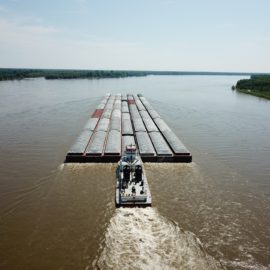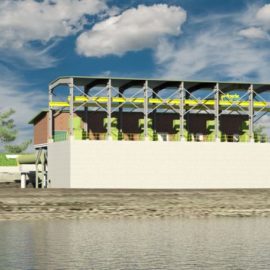
Restroring Bayou Lafourche will result in both the restoration and two long standing desires of the community.
The groups working to restore Bayou Lafourche are celebrating two major milestones this week. A long-delayed pump station, considered the lynchpin of a decades-in-the-making series of bayou restoration and water quality projects, was approved by the U.S. Army Corps of Engineers on Friday. The $77 million project will go out for bid next month. Construction, which is set to take place on top of the river levee in downtown Donaldsonville, will finish in two to three years. “It was a grueling four and a half-years, but we’ve cleared the final hurdles,” said Ben Malbrough, the district’s executive director. The district and Friends of Bayou Lafourche are also marking the removal of a small dam, known as a weir, with a boat parade and festival in Thibodaux on Sunday. The dam, built to regulate water levels, had divided the bayou for more than 50 years. It was torn out in May. Celebrations had initially been set for late August but were delayed by Hurricane Ida.
nola.com

Photo provided by Bayou Lafourche Fresh Water District
This is a joyous occasion, one that will be celebrated by a parade.
The procession will begin at 2 p.m. at the Wetlands Acadian Cultural Center, 314 St. Mary St. in Thibodaux, and follow a 3-mile-long route with stops featuring live music and vendors. The pump station and dam removal are part of a $180 million effort to reconnect the Mississippi River to the bayou, which starts in Donaldsonville and empties into the Gulf of Mexico at Port Fourchon. The bayou was sealed off from the river, its main source of freshwater, more than a century ago, triggering a series of environmental problems, including the loss of wetlands south of Houma and New Orleans. The new pump station will triple the river’s flows into the bayou and help revive the marshes and barrier islands that protect a large area of south Louisiana from hurricanes and sea level rise. Progress on the station was slowed after a range of concerns, including noise, aesthetics and historic preservation, were raised by leaders in Donaldsonville.
The Corps of Engineers id require the area to perform some mitigation measures.
The Army Corps’ approval was contingent on several mitigation measures. The district agreed to build a park, muffle the station’s noise, amend its design to fit Donaldsonville’s historic character, and install signs noting the history of an older pump that will remain alongside the new one. A final step was the district’s agreement to pay $166,000 into a wetland mitigation bank to offset construction impacts to the riverbank. The money will preserve 6.3 acres of wetlands in Lockport. The district has spent the past 10 years preparing the bayou for the pump station’s increased flows. Besides the dam removal, the district has widened and deepened several miles of the bayou, raised a Donaldsonville railroad crossing, and installed gates that control water levels. “The pump station is the most important component of the entire project,” Malbrough said. “All its benefits derive from our ability to increase the amount of freshwater into Bayou Lafourche. Without it, the whole thing would be a moot.”
It is always good when a win-win solution occurs and this seems to be one of those.



